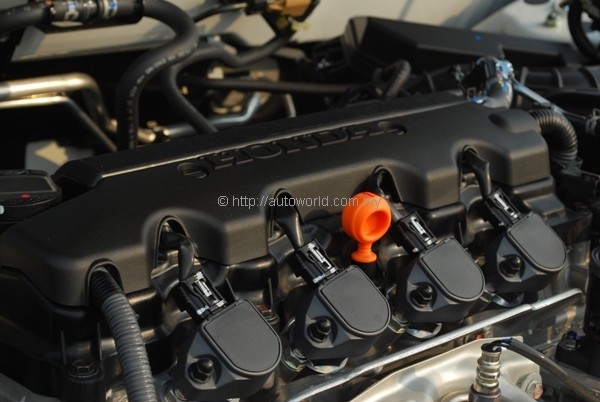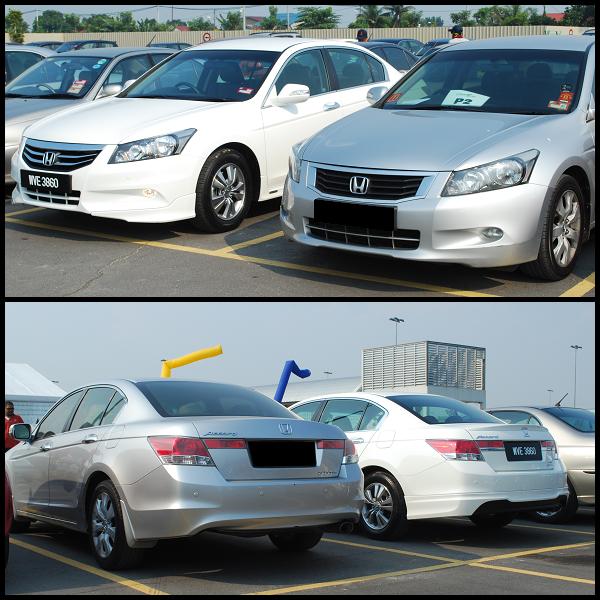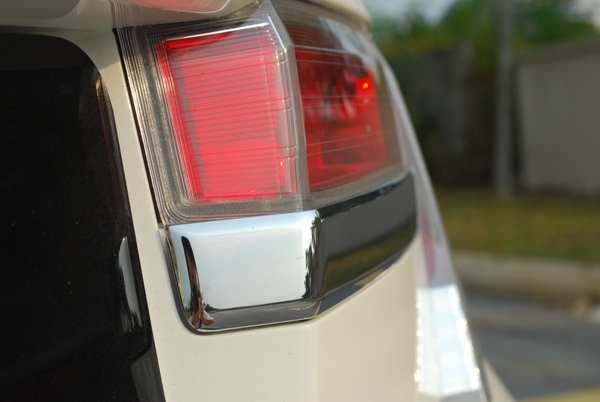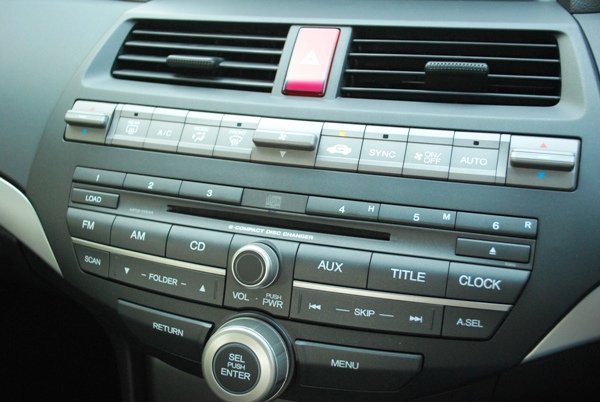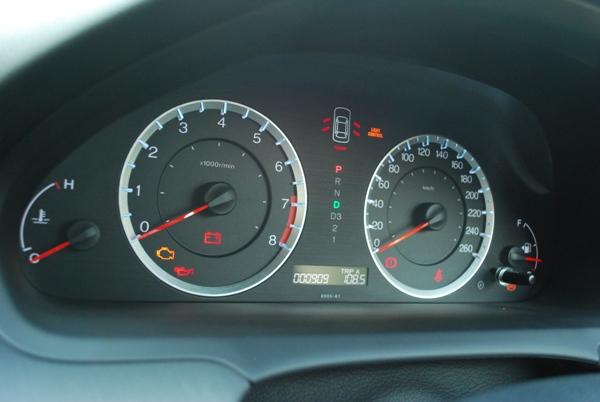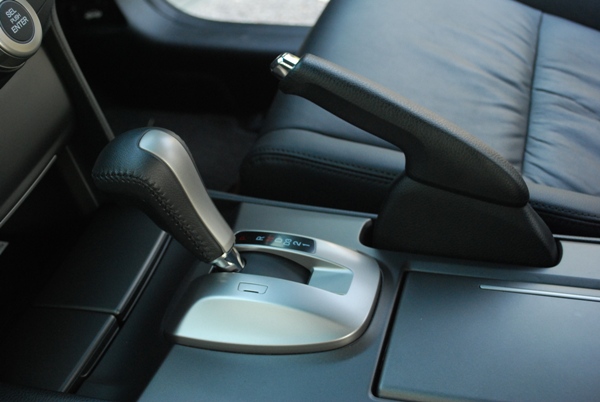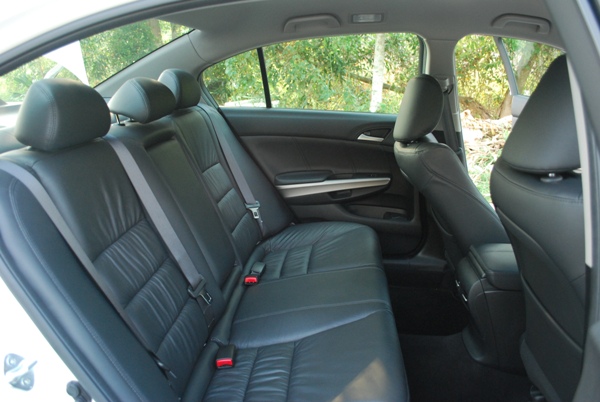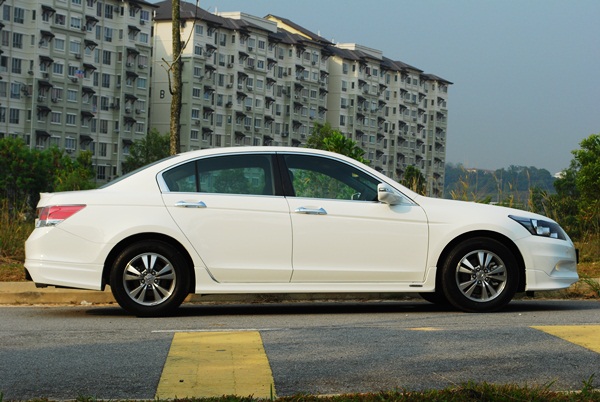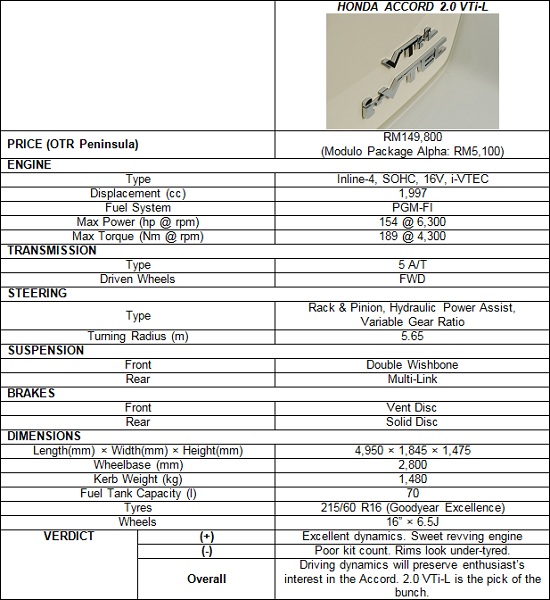Honda Accord 2.0 VTi-L – Facelifted version reviewed
Honda’s original line-up for the Accord when the 8th generation model was launched consisted of three variants – 2.0 VTi, 2.4 VTi-L and 3.5 V6. The 2.0 and 2.4 models were locally assembled in Malacca, whilst the 3.5 was imported as a CBU. In the interim, the better-equipped 2.0 VTi-L variant was added to the mix, whilst the 3.5 has been axed due to poor demand.
Having led the line-up for three years, the time is ripe for the Accord to receive its mid-life update which was released a couple of months back. The same three-variant line-up is offered as before with unchanged prices, so those of you with the patience to wait for the arrival of this facelifted model shall be rewarded with a bit of extra gear. No technical changes have been made though, so those who took delivery of pre-facelifted versions need not feel shortchanged either.
Cosmetic changes that differentiate the new from the original are subtle, and would take a keen eye to spot. The most obvious alterations would be the re-profiled front bumper and grille. The rear taillights get a touch of make-up with chrome strips underlining the blanked rear fog light slots. That strip is not a cheap stick-on; Honda actually altered the trunklid with a slot to properly attach the strip.
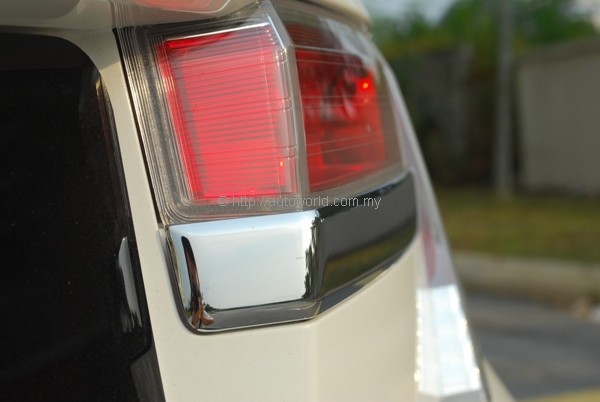 |
| Chrome lining is not just a stick-on strip here. |
In terms of added gear, the 2.0-litre models actually benefit the most, as Honda has allowed some features previously exclusive only to the 2.4 to trickle down the range – leather finishing on the steering and gear knob, front parking sensors, variable intermittent wipers and a new jack-knife key are now standard features for all variants. They could have changed the 16″ rims specified for the 2.0 models as well though, which have always seemed aesthetically unsuited to the Accord’s lines.
 |
| Minor cosmetic changes differentiate facelifted model from original. |
The Test Car
Our demo car for this review was the mid-range 2.0 VTi-L version priced at RM149,800 with insurance as before. Honda Malaysia also dressed our test car with the Package Alpha Modulo bodykit, which consists of external spoilers and skirtings, pushing its final on-the-road price to RM154,900. It was a pretty new car; its odometer was not even reading four-digits when we picked it up.
 |
| Test car came equipped with Modulo bodykit. Too bad rims are unchanged though. |
Since its introduction to the line-up, the 2.0 VTi-L has established itself as the Accord’s strongest seller, which is no surprise. Sporting a mere RM7,000 premium over the lesser 2.0 VTi, but offering RM23,000 of savings from the 2.4 VTi-L, choosing this mid-range model from the three is pretty much a no-brainer.
Stacked against the competition, however, we realize that Honda could have improved the Accord’s equipment count a bit. While the crowded centre stack may give you the impression that the Accord is lavishly equipped, its kit count excludes a number of features that we’ve come to take for granted in this price range. To start with, it’s been a while since we picked up a test car that does not read its own fuel consumption.
 |
| Over 30 plus buttons here, but only functions controlled here are climate control and audio. |
The comparable model of its arch-rival, the Toyota Camry 2.0G, is more generously equipped with electric seat adjustment for the front passenger and HIDs amongst goodies that the Accord 2.0 VTi-L misses out on; say nothing about the Hyundai Sonata, which shames everyone else in the competition twice over.
Driving Impressions
So, the Accord is not generously equipped, but Honda makes up for that deficiency by blessing it with one of the best-sorted chassis setups in the segment. As per segment standards, the Accord is independently sprung all-round, but while everyone else settled for MacPherson struts up front, Honda went the extra mile to offer the Accord with front double wishbones (that’s a ‘Like’); multi-links hold up the rear. Disc brakes are similarly standard all round, and the hydraulic power assisted steering’s rack has variable ratios. The ingredients are right for the enthusiast, and they deliver the goods.
Despite being quite easily the largest car its market segment, the Accord is very agile. While some may find its ride a little stiff, its composed body control when making sharp directional changes is impressive. It is not quite in the same league as the Ford Mondeo, but the big Ford is sadly underrated and largely ignored in our part of the world. Amongst big volume rivals, only the Nissan Teana comes close to matching the Accord’s dynamic prowess, but the Teana is even more stingy with equipment, where the 2.0-litre model is concerned.
 |
| D-segment now a four-way battle with Accord locked against Camry, Teana, and Sonata. |
I’ve spent my fair share of time with all three variants of the Accord, and I actually find the 2.0-litre versions to be more enjoyable to drive than the 2.4. Much of that enjoyment comes from the way the 1,997cc R20A single cam i-VTEC behaves in comparison with the 2.4’s K24A twin cam motor. Although the smaller engine lacks the bigger numbers, it makes up for that deficit with an eager throttle response. This engine is shared with the Honda CR-V, but not the Civic 2.0, which gets the K20A DOHC engine instead. It is, however, related to the R18A engine used by the Civic 1.8.
The 154hp / 189Nm engine forms an excellent partnership with Honda’s in-house developed 5-speed automatic transmission. This well-worked drivetrain setup shows that getting a transmission right is all about selecting the right ratios and intelligent programming. It makes the Camry 2.0’s 4-speed auto feel antiquated, and the Sonata’s 6-speeder seem like overkill. The only complaint against this transmission is the absence of an option to manually hold the gearbox to fourth gear, with the selector lever having only D, D3, 2 and 1 positions to choose from.
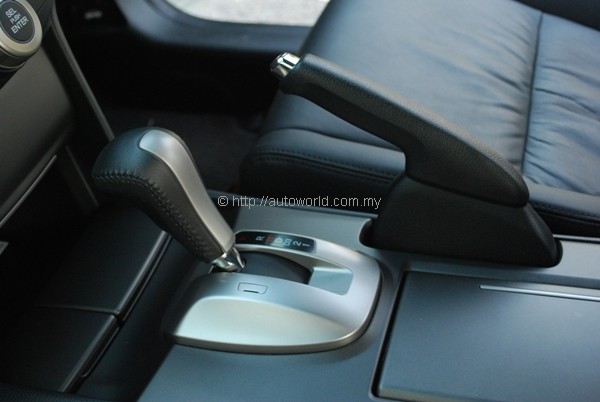 |
| 5 A/T gets the job done almost flawlessly, but no manual selection for 4th gear. |
One major improvement made to the Accord addresses a well-known criticism leveled at Honda cars of recent years, which is poor sound insulation. Compared to the pre-facelift model, road noise has been eliminated almost to the point of non-existence, and wind noise is similarly well-muffled, no longer being a hindrance to conversation at high speeds.
Verdict
Recent changes to the landscape of the D-segment market has made an update to the now-aging Accord imperative. When it debuted in 2008, the D-segment belonged almost exclusively to the Accord and its arch-rival, the Toyota Camry. Nissan’s re-entry to the segment with the Teana, and Hyundai’s gate-crashing of the party with the Sonata has forced the Accord into a four-horse race.
Updates made to the Accord in this facelift have not improved it by sufficient margins to cause any stir in the market, but the original product’s strengths mean that Honda will still have a huge say in this segment. Amongst its segment’s front-runners, the Accord is still the best driver’s car, and that alone will ensure that it maintains its loyal legion of fans, and most importantly for Honda, its market share.
 |
| 2.0 VTi-L is the best-selling Accord, a trend that’s likely to continue. |
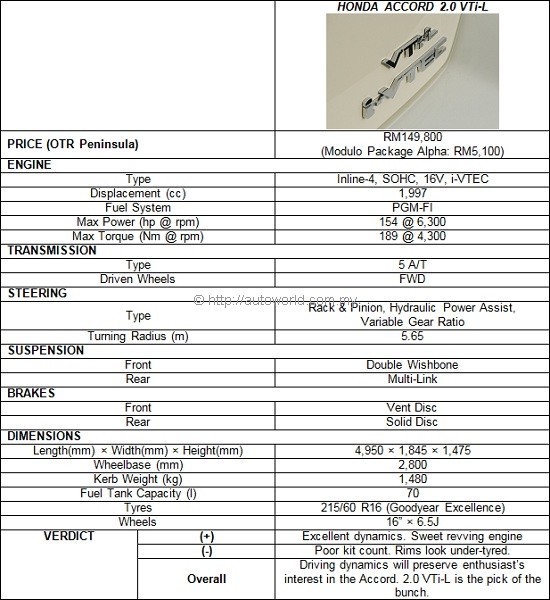 |







